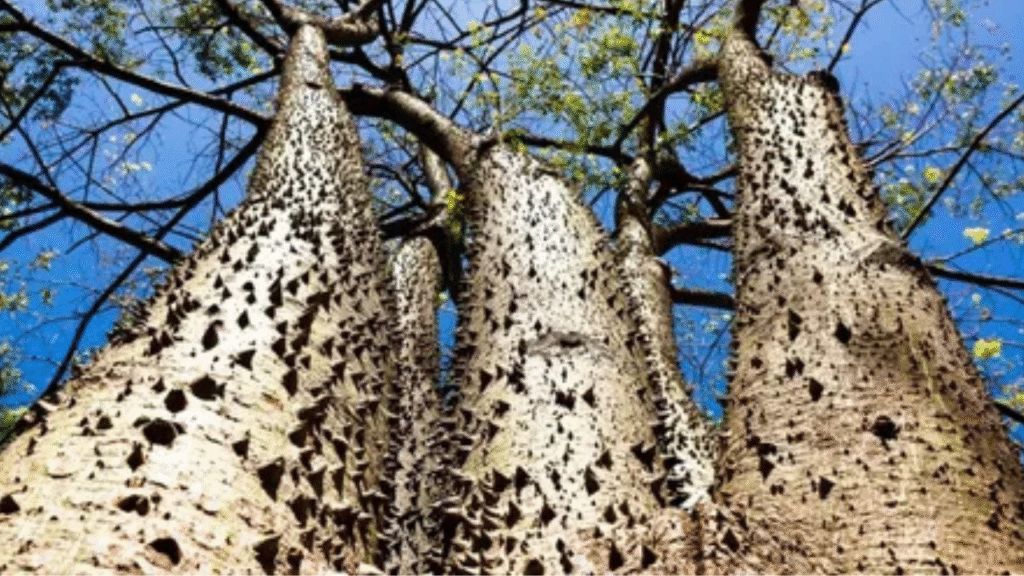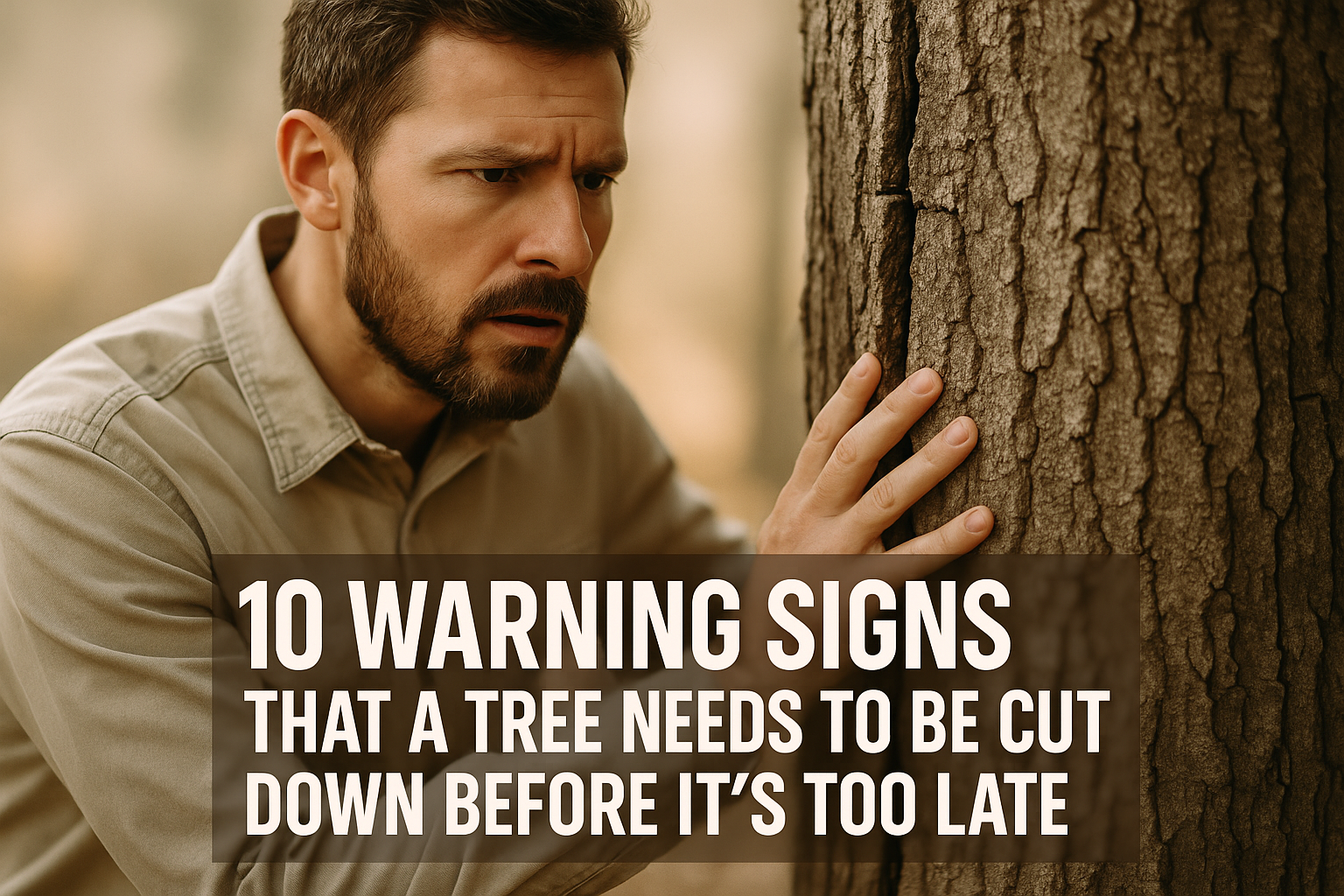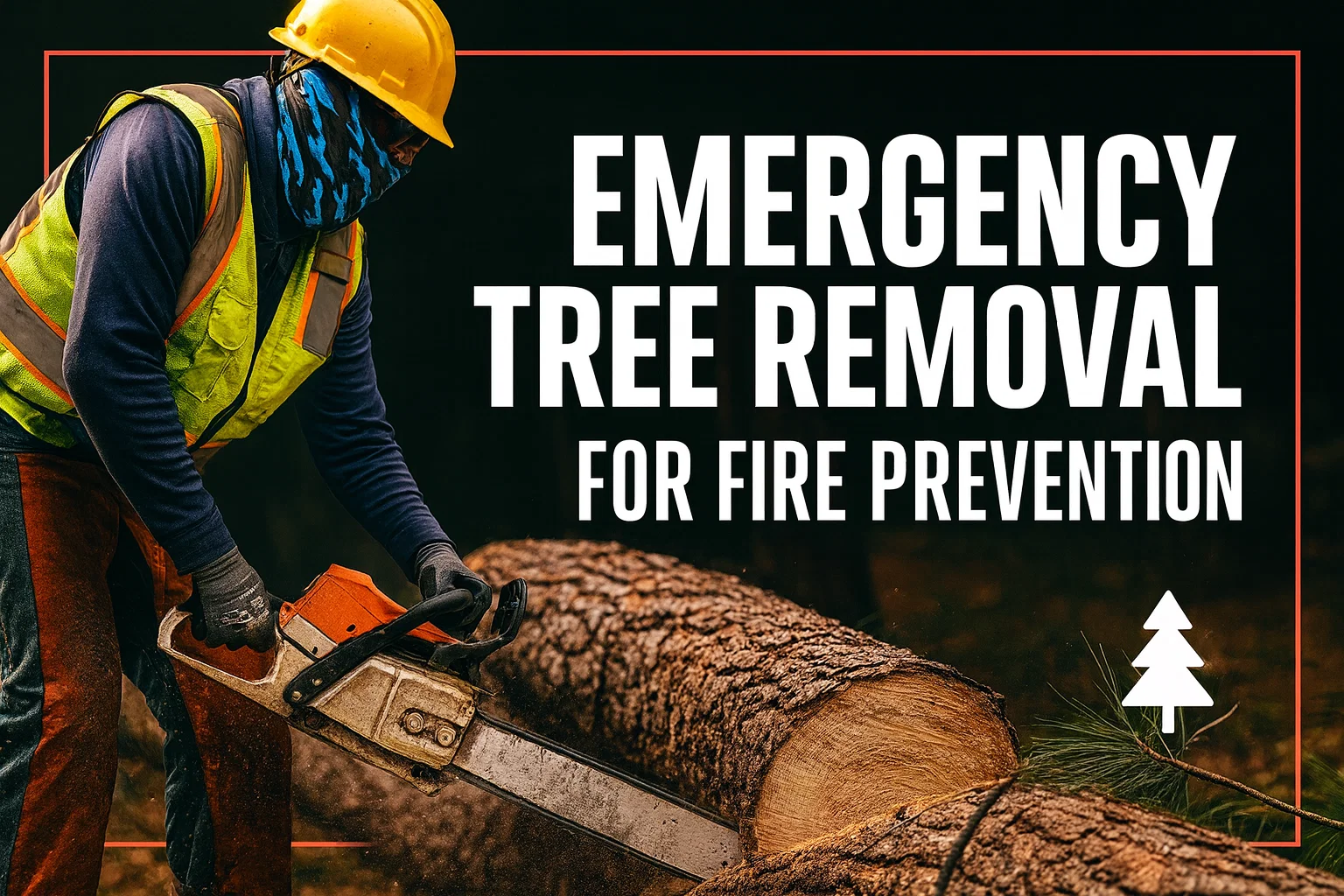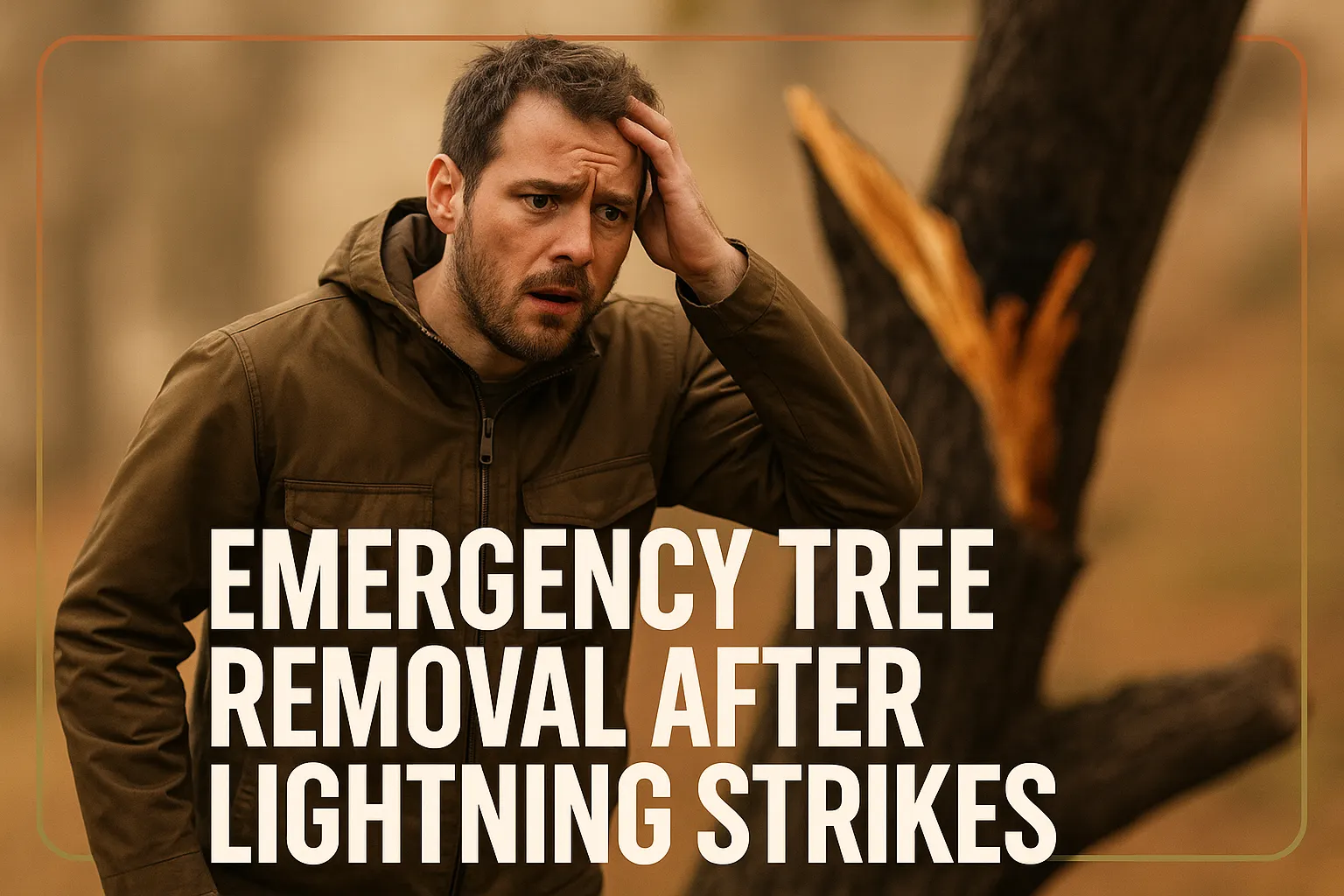Trees are not a wonderful thing you have in your yard, but they are living landmark trees that give you shade, beauty and comfort. However, what then becomes of that magnificent tree when it begins to show trouble? Overlooking the warning signs may make a beautiful addition into a possible disaster, which may threaten your home, family and your property. Just think of how heart-wrenching it is to lose a tree that cascades right down or the high costs of fixing your roof when a branch comes in and breaks your roof. It is not only wise to know the symptoms that a tree needs cutting down, but it is also very crucial to your safety and even peace of mind. Wait, don’t find out when it is too late that there have been hidden dangers in your trees.
This guide will ensure you learn to identify crucial issues before they escalate, thus in time, you may do something before it is too late.
Why Tree Removal Is Sometimes Necessary
Removing the presence of a tree in your property is sometimes a hard decision to make but in some cases, when it comes to safeguarding safety and property value, it becomes a must. The trees may grow issues that render them unstable or unhealthy, such that they become dangerous to people and buildings around them. It is better to understand why destroying trees is not always a bad solution, and this understanding will allow people living in houses to take the right step in time and prevent larger problems in the future.
Common Reasons for Tree Removal
There are diseases in the trees which can not be cured and gradually undermine the structure and tree removal is the safest manner. A tree can be left unsteady by the extreme harm done by storms, high winds or just old age, and a limb, a trunk will break. The roots of trees may spread under foundations, pipes and sidewalks over time and cause expensive damage. Also, trees that are planted near buildings or power lines may limit growth and become dangerous as they continue to grow.
Risks of Keeping a Dangerous Tree on Your Property
It is dangerous to keep a tree that is unsteady or is not healthy. Hanging trees may harm individuals, domestic animals or destroy cars and outdoor furniture. Entire trees occasionally fall in a storm or by their own weight and this can cause serious damage to property or injuries. The non-healthy trees can also reduce the aesthetic beauty of your yard and reduce the market value of your property. Moreover, when a dangerous tree ruins property belonging to a neighbor, it is possible to be liable.
Before and After Tree Removal: What to Expect
When you have decided to cut a tree, the first step will entail a professional examination and estimation of the state of the tree and the most suitable method of removal. In different areas, before removal is scheduled, you may be required to make certain that your area is permitted beforehand. Professional cutting and clean-up work is, in fact done to save your property and landscape. Removals can then be followed by restoration of the yards, which could include stump grinding, repairing the soil and planting to keep the outdoor landscape attractive.
10 Signs You Need to Remove Your Tree
It is very important to know the time when a tree should be removed so as to ensure safety and save on your property. This is a list of ten key signs that can be used to understand that a tree is no longer healthy or stable to stand.
Dead or Dying Branches
One of the most evident red flags is the branches of trees that are dead or dying. And they can either be dry, brittle, or totally leafless over long periods. The frequent falling of men or breaking off of branches is an indication that the health of the trees is diminishing and their structure is being affected.
Tree Leaning Over House or Toward Structures
When you see that a tree is leaning very much over your house, garage, and other buildings, alarm bells. A tree can be leaning, which is a sign that the roots are failing or the ground beneath the tree has been washed away. The lean can progress and become worse with time and the growth of the risk of falling of the tree falling.
Visible Damage or Disease on the Side of the Tree
Bark areas that have been stripped away, cankered, sunken, or spots oozing may all be indications of disease or extreme damage. Mushroom-like growths or indications of fungi on the trunk or the branches are indicators that the tree might be experiencing internal rot or infection, which weakens the structure of the tree.
The tree is uprooting or Roots Are Exposed
The soil movement or shifting in and around the base of the tree is an indication that the soil is becoming loose for the roots. Exposure of roots deprives the tree of its ground, making it very susceptible to being uprooted in a storm or other high winds.
Large Cracks or Splits in the Trunk
Structural weakness is evident in vertical or horizontal cracks, which increase with time. Such cracks decrease the hold of the tree in sustaining its weight and tend to increase with the movement of the tree, weather, and age.
Signs of Internal Decay or Fungus at the Base
When the tree has mushrooms, conks or any other fungi at the bottom of the tree it is a sign that something is decaying inside the trunk. A hollow or soft-sounding trunk when tapped usually indicates internal rot, which may collapse at any time without giving you any warning.
Other Important Indicators
Other signs, which suggest that there may be removal of trees, are a tree that has over leaned following the storms or a tree that has reached or even surpassed its natural lifespan. The old trees would be weakened and exposed to threats of environmental stresses; they would have to be taken away to be safe.
When to Cut Down a Tree on Your Property
It is difficult to know when to trim down a tree on your property. Knowing how healthy a tree is and what dangers its state presents, one can make the choice better informed.
How to Tell if a Tree is Healthy or Dying
Healthy trees have leaves that are green in color, well-developed and flexible branches and intact and without any serious damage in the tree bark. Conversely, when a tree is dying, it can be discoloured, it can also have abnormal leaf loss which does not match the seasons and in addition, the tree might have visible evidence of rot, like peeling or cracks in the bark. The symptoms also suggest that the tree is in its decline phase and that it can require removal before it becomes dangerous
When to Cut a Tree Down for Safety Reasons
The trees are required to be removed as soon as they become a threat to human beings, pets, and property. This is usually done in cases where a tree is severely damaged, unstable or diseased beyond redemption. The tree may either keep on degenerating or still be hazardous and hence it needs to be cut down even after efforts to cure or stabilize it so that accidents or destruction can be avoided.
Who Decides When a Tree Needs to Be Removed?
Arborists should be advised on the viability of removing a tree since they are certified arborists and they know how to properly assess the condition of a tree. They can advise whether they should be removed or whether they may be reused. Also, local government departments or towns usually possess regulations and permit issues regarding the cutting of trees, hence including them would be a surety that it is within the legal standards.

Special Cases: Large or Dangerous Trees
There is an increased risk to large or dangerous trees that would demand extra care and skills. Proper precautions for the possessions as well as those around make your property safe and secure.
How to Cut Down a Huge Tree Safely
One cannot remove a large tree as a DIY project. It involves the recruitment of personnel with appropriate tools and expertise to deal with the work safely. Controlled cutting methods are used by experts to control how the tree falls so that it does not harm the surrounding buildings and individuals. The planning and execution ensure that accidents are avoided and efficient removal is done.
Tree is Leaning on or Over Your House, What to Do
When a tree is literally leaning on your house or even very close, it is imperative to move fast. Gather an urgent professional examination to judge the stability of the tree as well as the potential risks. Depending on the results, it is better to focus on either getting rid of the tree or doing something to ensure the tree is stable to avoid the potential harm to your house.
Taking Out Trees Near Power Lines or Buildings
Deforestation around power lines and buildings needs to be conducted under the firm rules and regulations of this safety. Always use the regulations of local utility companies to avoid electrical accidents. These removals ought to be done securely and legally by licensed professionals who are well-trained and equipped to do so. Nothing is as risky as trying such work without experience and endangering lives and property.
Conclusion
It is important to know when a tree is to be cut so as to save your home, family and property. Early intervention before the signs of poor health, such as dead branches, leaning, or rot, eliminates accidents and expensive destruction. The removal should always be made with the assistance of a certified arborist and the local regulations should be adhered to to make sure that it is safe and legal. It is like a small tree or a big, dangerous one; professional assistance will ensure that the work is done properly and safely.
You can rely on Trust Alexa’s Tree Services to remove the tree at your place and leave it to the expert to clean the mess in your yard and give you peace of mind.
FAQ’s
Yes, as a tree falls, a loud and quite theatrical sound is created due to hitting the ground and breaking the branches. The distance is quite long with this noise, as it can be detected in a quiet neighborhood or in the forest.
The action of removing a tree on or close to the property boundary relies on the rights of ownership and state rules. It’s important to consult your neighbors and review municipal regulations before taking any action to avoid disputes or legal issues.
The cost of removing trees differs and varies based on the size of the tree, location, accessibility, and overall difficulty of the job. Depending on the size and hazardousness of the removal, prices may be as low as a few hundred dollars on small trees, up to thousands of dollars on large trees.
The duration of eliminating a tree would depend on the size and complexity of the tree. Small trees can, in many cases, be cut down in a few hours, whereas large trees or those in inaccessible places may take the whole day or more to cut down safely.





